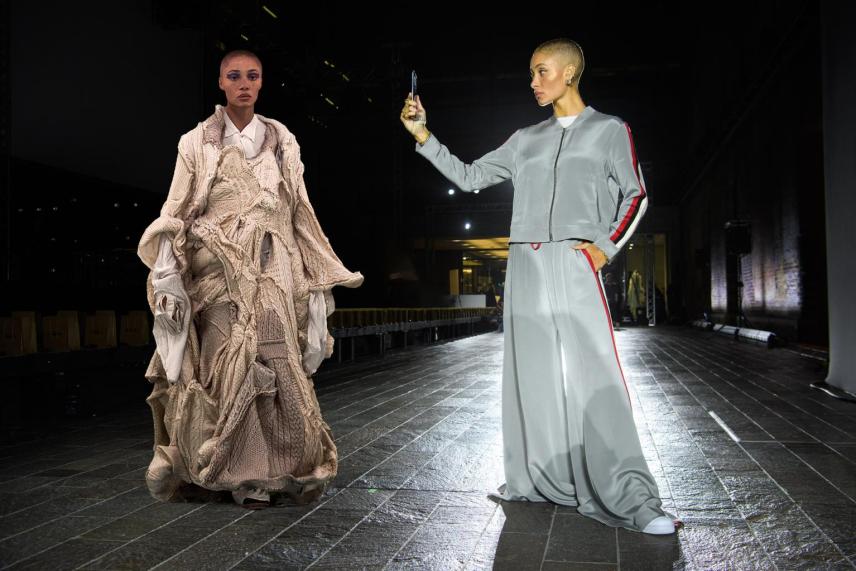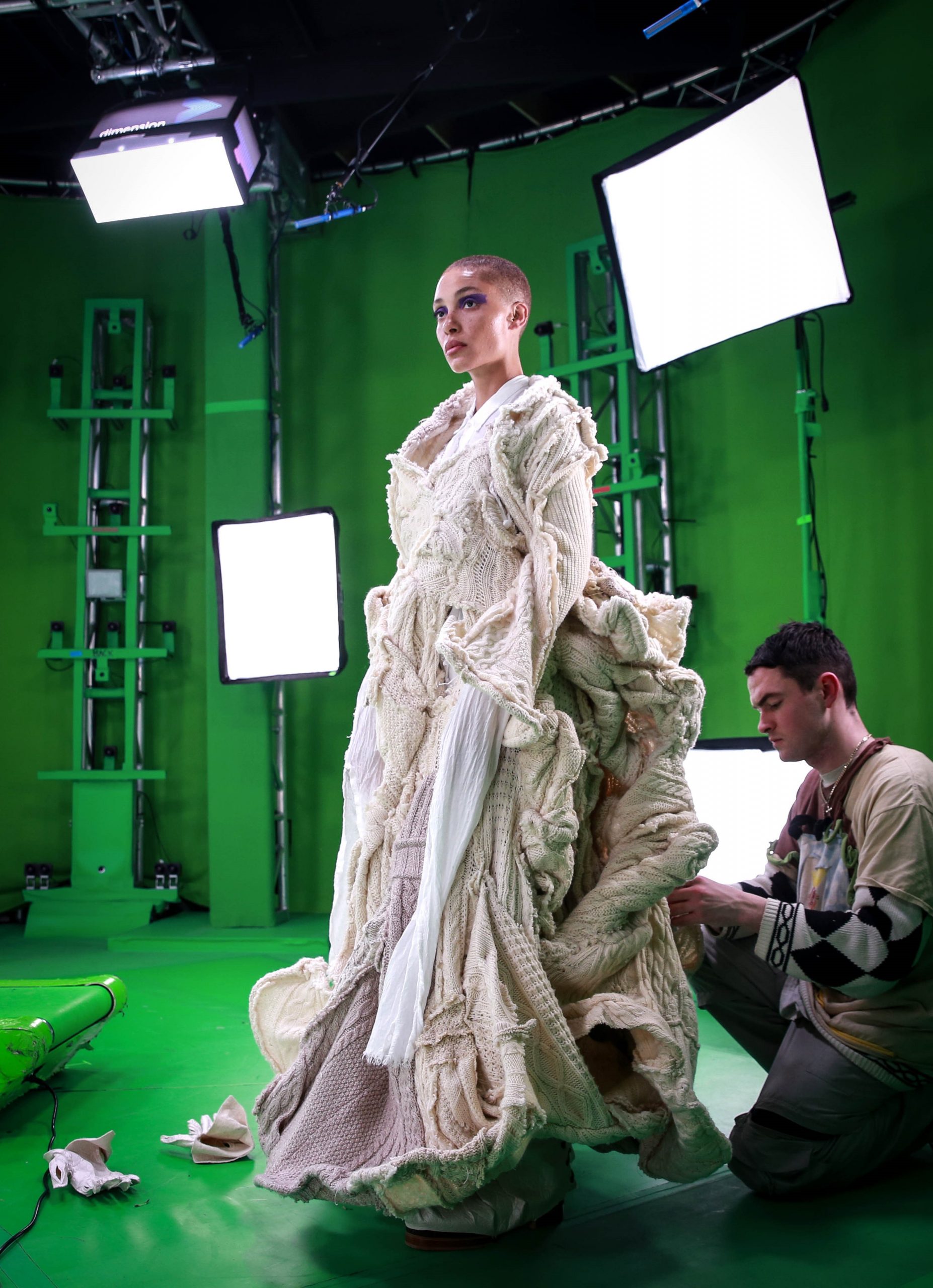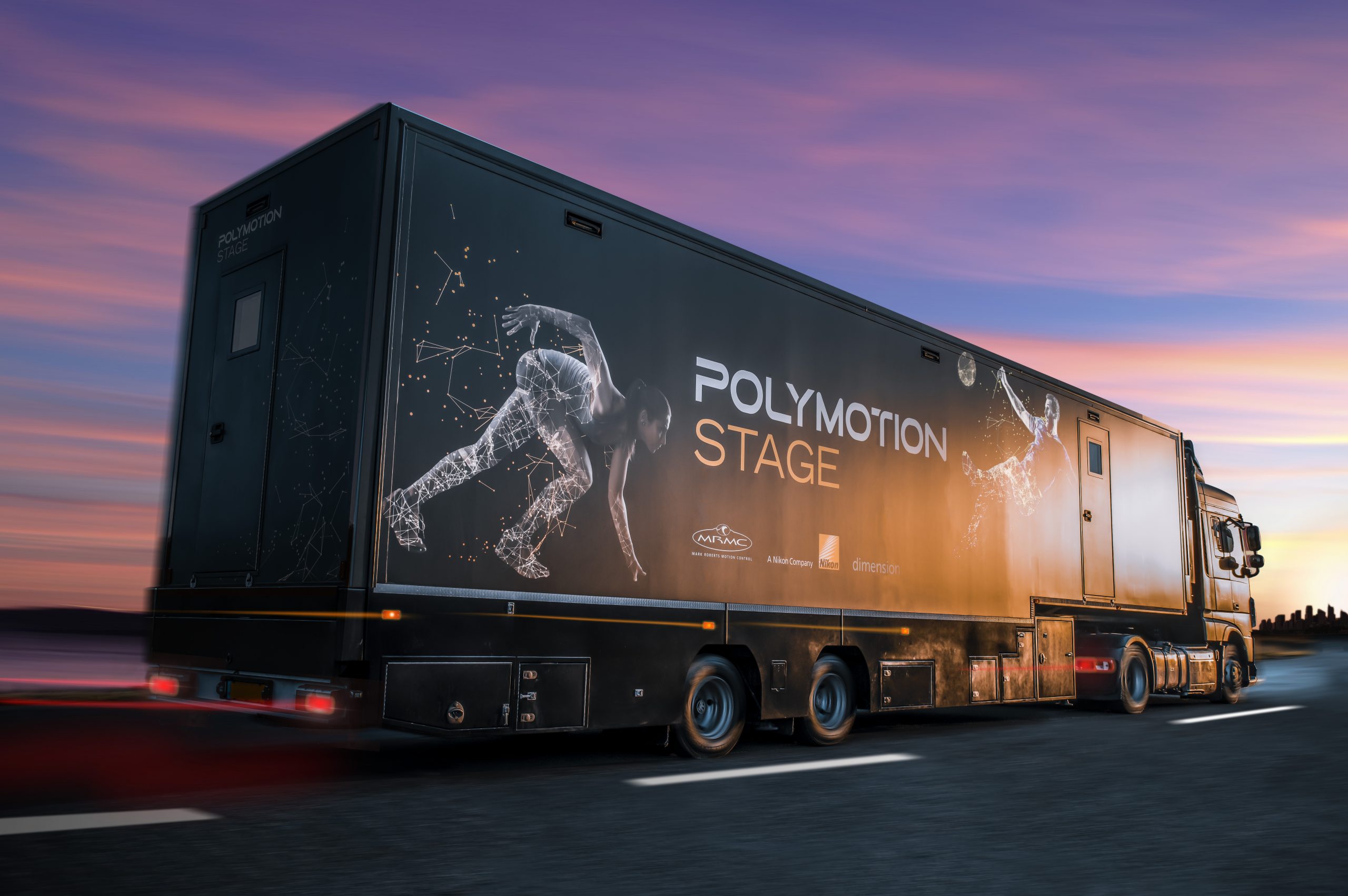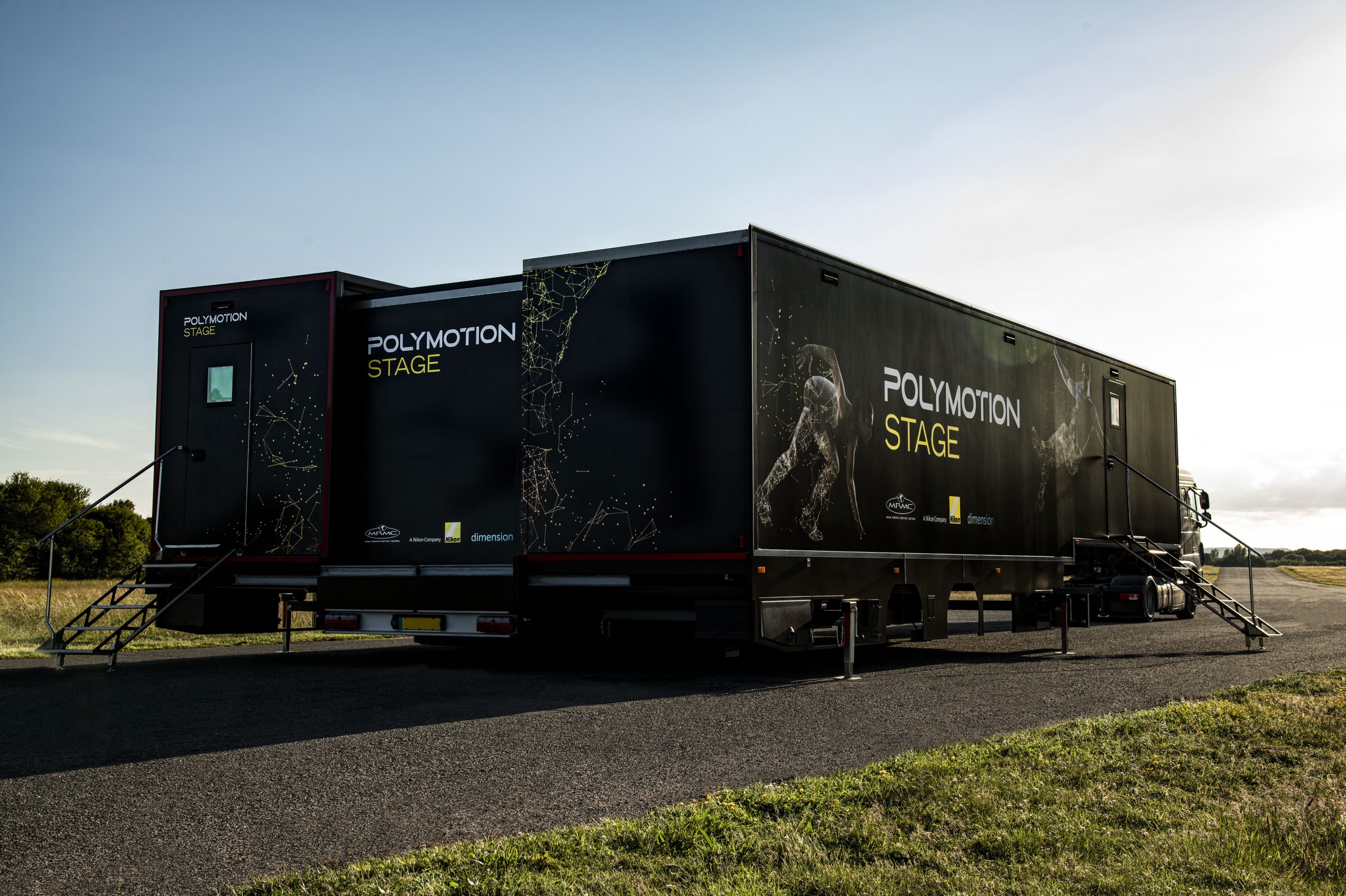
Microsoft Stories podcast: episode 8 – Dimension Studio
Hello and welcome to Microsoft Stories, a new podcast about technology and innovation.
In this episode we visit Dimension Studio, a Microsoft mixed-reality partner that creates incredible experiences using holograms. Dimension, led by Simon Windsor, has worked with stars such as Madonna, boxer Anthony Joshua and tennis player Andy Murray. It also helped to create a hologram of model Adwoa Aboah, so she could see herself walking down the catwalk.
Dimension is on the cutting-edge of digital experiences, so I was keen to talk to Simon and Alex Montgomery, Director of Azure Product Marketing at Microsoft, about innovation in mixed-reality and using Microsoft HoloLens to create new ways of seeing the world.
Click the play button and join us on our journey.
Click here to visit our Podcast page.
Transcript of this episode
MUSIC INTRO
Hi, I’m Andy Trotman, Head of News at Microsoft UK. Welcome to Microsoft Stories – a new podcast looking at technology and the people who use it.
In this series, I’m trying to answer the question: what is innovation? It means different things to different people. Innovation can be as simple as adding an eraser to the end of a pencil or as complex as sending people to the Moon.
What does it mean to be innovative? How do you know you’re being innovative? Along my journey, I meet people using technology in amazing ways, and discover what innovation means to them.
Join me on my journey.
MUSIC FADES
In a South London business park sits an unassuming building. Walking past, it’s easy to miss; the brick exterior looks like the facades either side. There’s nothing special about the black, wooden front door.
Only the sign above the door is different: Dimension Studio.
The building may look ordinary from the outside but what happens inside is anything but. It is one of the most innovative places I have ever been in. Its clients would probably agree. Madonna, boxer Anthony Joshua and tennis star Andy Murray are just a few of the people to walk through that unassuming door and find themselves completely transformed. Literally.
I see the door to Dimension Studio like the door to Narnia. You’re stepping into another universe where anything is possible and the usual rules of the outside world don’t apply. Simon Windsor offered to show me around. He’s my Mr Tumnas, if you like.
SIMON: I’m Simon Windsor. I’m joint Managing Director at Dimension. Dimension is a next-generation virtual production studio. We have a number of studios. We’re primarily focused on the creation of volumetric, three-dimensional content using new forms of production to enable our content, so Virtual Reality Augmented Reality mixed reality but also for use cases across broadcast live events. And new types of corporate application.
What that means is Dimension creates virtual worlds and experiences, as well as holograms of people that can be used almost anywhere and seen by anyone who is watching a TV or using a mobile device or headset such as Microsoft HoloLens.
You might have seen Madonna’s incredible performance at the Billboard Music Awards, in which she danced on stage with four replica holograms of herself. Dimension made that happen.
You may have been to the mind-blowing War of the Worlds interactive experience in London that places you inside HG Wells’ world and lets you get up close and personal with the aliens. Dimension made that happen.
The more laidback listeners among you may have seen Sky’s coverage of The Open, and watched as the presenters used holograms to analyse the golf swings of top players such as Rory McIlroy. Dimension made that happen, too.
SOUND OF GOLF SWING
Madonna visited Dimension’s South London studio and her image was captured by 106 high-spec cameras in order to turn her into a hologram. The golfers used Dimension’s mobile studio.
To give you an idea of the cutting-edge innovation that Dimension has developed using Microsoft Mixed Reality technology, here’s Simon to explain how they worked on The Open.
SIMON: So if you imagine, surrounded by 106 cameras, this studio space was taken to the golf course in Northern Ireland. It was housed under a geodesic dome, weatherproof and it was next to the practice area the pros were using ahead of the tournament, so they came through, we filmed them, we’d already had their golf clubs pre modelled, so we could add them in post-production afterwards because the technology can’t quite capture the speed of a fine reflective golf shaft or the accuracy of how it bends in the movement… So for Sky Sports, they used it to pause the action, to analyse a swing from different angles. The great inherent benefit of this technology is because it’s a three-dimensional asset, you can move a virtual camera around that asset and get any viewpoint.
Blending the real and virtual worlds is certainly innovative, and thanks to companies like Dimension, it’s a lot more common, especially on TV and in advertising. But, according to Simon, every project Dimension works on is innovative because it’s usually a project that’s never been attempted before. It’s a good point. How many companies do you know that are creating holograms?
Working this cutting-edge way requires two things: a team, and a culture of innovation and creativity.
For Dimension to be truly innovative, its 50-strong staff need to work with a degree of freedom and creativity. They need to be allowed to push boundaries. But not asking for permission to do that, it has to be baked in to the DNA of the company. Freedom to innovate is implied. More than that, it’s expected.
For Simon, innovation comes from working as a team.
SIMON: We’re still an SME, we’re still quite a small business, we have a flat hierarchy. But the only way that we move forward, the only way in which we deliver on… we punch above our weight in many regards, but the only way that happens is by working as a team and by recognising the fact that innovation comes from lots of different people with different ideas.
We use the old adage – try and fail and then try again. That’s genuinely the case. Most of what we’ve done, we’re only able to deliver some of the work that we can produce now, because of the brave mindset and determination of all of our staff who are closely involved in our productions.
That’s not just internal staff. Simon is talking about people at Microsoft and Dimension’s other partners, too. For Simon, innovation stretches out beyond the walls of Dimension’s studios. I see it as similar to ripples on a pond when you throw a stone in it – but in reverse. The technology and collaboration from Dimension’s partners enables the work that Dimension’s staff do with clients and among themselves, and then the studio at the centre – a small, green room with more than 100, precisely arranged and calibrated cameras, shooting 60 frames per second in 16k resolution.
Dimension’s team works with that footage to create a lifelike digital twin that can then be seen by people with digital devices in a specific space.
One of my favourite examples of this is the work Dimension did with supermodel Adwoa Aboah. She was sat in the front row at London Fashion Week, with an empty catwalk in front of her. The audience were then asked to hold up their mobile phones, which allowed them to see a lifelike hologram of Adwoa walking down the catwalk. Adwoa was watching herself, gaining a perspective that she could never usually get.
That’s the power of mixed reality and why it can help people innovate.
Here’s Alex “Monty” Montgomery, Director of Azure Product Marketing at Microsoft.
MONTY: One of the most exciting things with being involved in mixed-reality is really seeing what customers and partners are doing with technology. Some of the examples that I absolutely love include bringing this technology to firstline workers to enable them to do their jobs in new and better ways. So we have seen everything from architects and people in construction being able to visualise, walk around and analyse building design long before any bricks are laid. In manufacturing, people can assess equipment, construct, deconstruct, fix, repair, carry out training on items long before they’ve gone into the production line. So there’s lots of uptake in the traditional industrial space but we are also seeing a huge amount of uptake in areas such as healthcare. A very, very strong example here is where surgeons are able to take MRI or CT scan data and instead of looking at that on a flat screen or a 2D surface, they can actually see that 3D image and overlay it on a patient.
Those solutions are brought to life with HoloLens, Microsoft’s headset that lets the user see holograms overlaid on the real world. So, as Monty said, you can place a hologram of a new building in the place where you are going to build it and see what it looks like. Or if you’re a surgeon, you can take a scan of a patient and overlay that onto the person as you’re operating on them, so you know exactly where you need to make an incision.
SOUND OF HEART MONITOR
This isn’t the future, it’s being done today, with people using HoloLens 2 across the world. Here’s Monty again talking about why businesses are using HoloLens 2.
MONTY: What we’ve seen over the last few years, working with customers and partners, is that mixed reality and HoloLens typically forms part of a wider digital transformation exercise in those organisations. Customers are typically looking to empower employees with new digital technologies to enable them to work better and smarter, they want to transform the products and services they are taking to market and change the way they engage their customers around those products and services. Finally, they’re looking to optimise the operations of their business. Mixed Reality offers an innovation in the sense that it brings a visualisation layer alongside associated technologies to visualise data and really deliver those digital transformation outcomes that organisations are seeking to achieve.
That’s certainly what Dimension is doing – taking a visualisation layer, combining it with other technology and solving problems. The only difference is that Monty is talking about commercial problems, whereas Dimension usually creates experiences in the entertainment sector – sport, film etc. Both require innovation but because Dimension’s work with mixed reality is much more creative and more trial and error than, say, a surgeon removing an appendix, Simon admits that the results of his team’s innovation process are often unknown when they begin. They have an objective but the road to getting there often has to be created as they go. Some of those roads may lead nowhere, but some will get them to their goal.
So, Simon is saying that his team approaches innovation as something unknown. However, in that case his team requires a very important ingredient – the desire to create something innovative. You can be surrounded by all the technology in the world, but it’s pointless if you don’t have the focus to use it.
SIMON: Yes, you can set processes and practices in place, and of course, culture is really important to that, but ultimately what innovation is about is it is about achieving objectives which are going to take you forward towards maybe some grander vision. To get there, you’ve got to be prepared to commit to trying, ultimately.
So, does that mean that innovation is more of a mental act, rather than something that happens spontaneously as you’re creating something?
SIMON: That question scares me. I suppose it sounds kind of obvious to say that it starts with the mental because the idea or the seed that inspires whatever you do physically around that innovation has got to start from human ingenuity, I suppose. It’s a very interesting one, because it really depends on the nature of the challenge you’re trying to solve, ultimately.
Microsoft is trying to make it easier by ensuring that mixed reality tools such as HoloLens are ready to use “out of the box”. You don’t need to write code, you don’t even need to be that knowledgeable about computers. You put a HoloLens Two on your head, turn it on and start transforming your business. If you need help, Microsoft Dynamics Remote Assist lets you place a video call in the room with you so you can talk to an expert without using your hands.
So while being innovative will always be hard, Microsoft is giving you the best tools. It’s kind of like attempting to run a marathon, with Microsoft giving you very comfy trainers. They can’t run the race for you, but they are giving you the best chance of success.
Here’s Monty at Microsoft again.
MONTY: It’s definitely a core focus of ours that businesses should just be able to select the right device for their use case and be able to start using it straight away. Developers also need to use the tools that they use today to drive familiarity and productivity. So there’s a lots of services that we have to be able to create to make this all a reality. And it’s really all about working hand in hand with both customers and developers, taking their feedback, and then iterating to create things that haven’t yet been created so we can bring this all to life at a pace to make that really matters and makes this real.
That’s interesting. Microsoft isn’t innovating on its own either. When it comes to mixed reality, the company is including customers and developers in the creative process so everyone gets tools they will actually use to solve problems.
MONTY: And one of the things that I’m particularly proud about, which is the way that across our engineering, and our customer-facing organisations, we’ve really deeply partnered to understand what’s going on in the market and what is the feedback. What signals are we seeing? What are the customer and partner specific feedback? Where are our gaps? What do we need to do better? Most importantly of all, where is the transformational ROI truly coming from, from our technologies and services. And then how do we make sure that those are the areas that we continue to really focus on and adapt our product portfolio to, to ensure that we are delivering and offering the right services for all customers in the market.
So what does that mean for companies like Dimension, who are feeding into Microsoft’s mixed reality development and then getting a platform they can use to create incredible holograms and digital experiences?
It means that they have a mixed reality platform they have helped to create, so they can focus on working with customers such as Sky to really push the boundaries of interactive content, whether that content is captured at a studio or next to a professional golf course at The Open.
Dimension has two permanent studios, one in London and one in Newcastle but it also a mobile studio, which is an incredible example of innovation in itself. They’ve taken the studio and put it in a truck. When the truck stops, it can expand to the size of the London studio.
Simon has dubbed it The Transformer.
SOUND OF A TRUCK
SIMON: It’s a bit of a transformer. The project name was Optical Prime. Yeah, reference The Transformers.
When you step on board, you forget you’re on a truck. You feel like you’ve just stepped into a studio. It’s geared up exactly as you’d expect a cutting-edge film studio to be geared and to operate.
Creating a mobile volumetric capture studio is an incredible feat, and the level of innovation to make this a reality shouldn’t be underestimated. In order to create a lifelike hologram, the 106 cameras in Dimension’s studio have to be finely tuned, calibrated and aligned, so they shouldn’t be moved around or handled. So placing them on a truck, which is inherently unstable and moves around, would normally be a bad idea. However, Dimension’s engineering team came up with a solution to ensure the camera equipment could be kept stable while in transit.
Then there was the issue of how Dimension could turn the truck back into a studio.
SIMON: Then what we’ve had to do is we’ve had to design the truck in such a way that it can expand to three times its footprint, so that we’ve got the same studio space to be able to capture the same type of content and to ensure that we can provide the same level of service to our customers or the talent we’re working with. So we can get a hundred people through that film stage in a day if we need to, if we are working at Pinewood with one of the film productions there, and we need to get everyone who’s in costume through the stage, we can do that efficiently. So we’ve had to design every aspect of the truck to not only to be stable and to ensure the technology’s performance, but also to work in such a way that it’s friendly for the audience and for the customers who want to use it as a good experience. The result of the motion stage truck is that it’s been a huge engineering feat.
Simon believes that the world is on the cusp of a new world of content creation and experience, based on mixed reality. Children will be sitting at home creating their own short films or games with the same quality as a Hollywood production. Anything you can think of, you will be able to create and bring to life in front of you, and your friends will be able to share that experience with you. In Simon’s words, there is no limit to where mixed reality technology can take us.
SIMON: We are one production company, one technology company among many who are helping to pioneer and advance the state of the art for the next generation of storytellers, and creators and my God, how exciting is it when you can start to realise your imagination effectively. Anything that you can conceive of in your mind, we can now create and you can step into that world and your friends can enjoy it as part of a shared experience.
This has been a fascinating look at mixed reality but I’m afraid that’s all the time we have for today. Thanks to Simon and Monty for chatting to me. And thank you for listening. Don’t forget to look out for the next episode of Microsoft Stories soon.
MUSIC OUTRO




